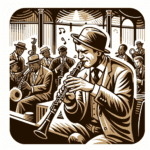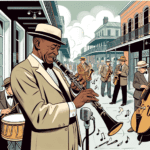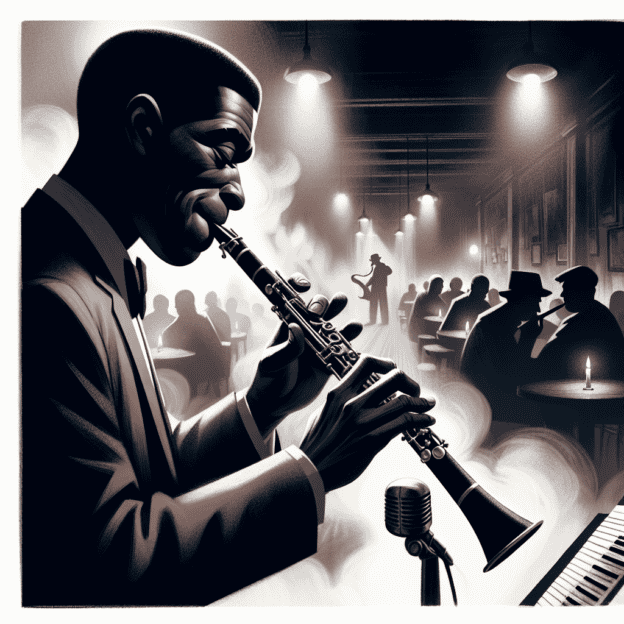Johnny Dodds: The Blues Clarinet Pioneer
Johnny Dodds, a name that echoes through the history of early jazz, created a sound on the clarinet that few could match. As a blues clarinetist during the golden age of jazz, his expressive playing added depth to recordings with legends like Louis Armstrong and Jelly Roll Morton. But what set Johnny Dodds' blues clarinet talent apart? Let's explore the heart of his artistry and the lasting impact on clarinetists today.
Dodds had a remarkable ability to convey emotion in every note. His sound wasn't just a technical exercise—it told stories. By immersing himself in the blues, his clarinet seemed to cry, laugh, and lament all at once. It wasn't just about hitting the notes—it was about what those notes meant. Aspiring clarinetists can learn from his knack for infusing raw feeling into a performance.
The Essence of Dodds' Sound
Much of Dodds' genius stemmed from his command of the clarinet's lower register, giving his melodies a rich, grounded quality. His solos on tracks like “Wild Man Blues” or “Perdido Street Blues” showcase this mastery. Picture yourself in a smoky club, those tones swirling around you—it's bound to give you goosebumps.
| Characteristic | Description |
|---|---|
| Tone | Rich, emotive, grounded in lower register |
| Technique | Growling, gritty tonguing style |
| Emotional Range | From joyful to melancholic |
| Improvisation | Blues-based, soulful, story-telling approach |
Examining his technique, Dodds often used a growling, gritty tonguing style that gave his blues clarinet an authentic, down-to-earth vibe. He wasn't after polished perfection—he embraced the imperfections that made his playing human. This approach has inspired generations of players seeking that raw quality in their own sound.
Capturing Dodds' Magic
If you're looking to capture some of Dodds' magic, spend time with the blues scale—it's the key to soulful improvisation. Start slow. Play each note thoughtfully, letting it breathe before moving to the next. Dodds showed us that less is often more in music. He could transform a simple phrase into something unforgettable.
Any discussion of Dodds must include his collaboration with jazz greats. His work with Louis Armstrong's Hot Five and Hot Seven solidified his place in jazz history. Playing alongside Armstrong meant Dodds had to hold his own as a soloist, demonstrating his ability to match Armstrong's power while maintaining his unique, emotional voice.
Dodds' Influence Today
Although the early 1900s might seem distant, the lessons from Dodds' blues clarinet remain relevant. It's fascinating to see how many modern players channel his spirit, incorporating blues emotions into their playing across genres from classical to contemporary jazz.
For newcomers and experienced players alike, studying Dodds' tone is an excellent way to improve on the clarinet. Pay close attention to how he shapes his notes. Train your ear to notice subtle shifts in dynamics. Was he flawless? No—and that's exactly the point. His imperfections made his playing authentic.
Modern Instruments and Dodds' Legacy
Comparing instruments from Dodds' era to today's options, many agree that quality horns were crucial in achieving such beautiful tones. Brands like Martin Freres Clarinets exemplify the high-quality craftsmanship that supports artistic expression. While Dodds didn't have access to modern clarinets, today's well-crafted instruments allow musicians to explore new territories while drawing inspiration from past masters.
Storytelling Through Music
Another valuable lesson from Dodds is his emphasis on storytelling. Great musicians don't just play—they narrate. In your next practice session, give each piece of music its own story. Is it a midnight stroll under the stars or a lively New Orleans parade? Think like Dodds, and you'll find your playing gains a new dimension of life.
It's also worth exploring Dodds' bending and scooping techniques; elements that made his approach to the blues so expressive. Mastering these may take practice (and some trial and error), but it's a skill that adds unmistakable character to your sound. Start with simple exercises and gradually increase complexity as you become more comfortable.
Community and Musical Heritage
When discussing legends, we can't overlook the environment where the blues clarinet took root. Dodds represented an era of genuine jazz that was as much about community as it was about individual skill. Each performance was more than a solo act; it was a connection to the lives, challenges, and joys of his audience. Today's clarinetists can still draw inspiration from this sense of shared musical heritage.
Carrying Dodds' Legacy Forward
How can we keep Dodds' legacy alive? First, listen extensively. Immerse yourself in his recordings until they become part of your musical DNA. Next, experiment freely. Blend old-world tradition with modern creativity. And always keep the blues spirit alive; few things connect hearts like the bittersweet melody of a blues tune.
Johnny Dodds' blues clarinet continues to inspire musicians. His gift for expressing vivid emotions through sound is something we can all learn from, regardless of our experience level. As you pick up your clarinet today, consider the soul behind each note and channel the passion Dodds brought to his playing. You might just create something as enduring and moving as his music.







